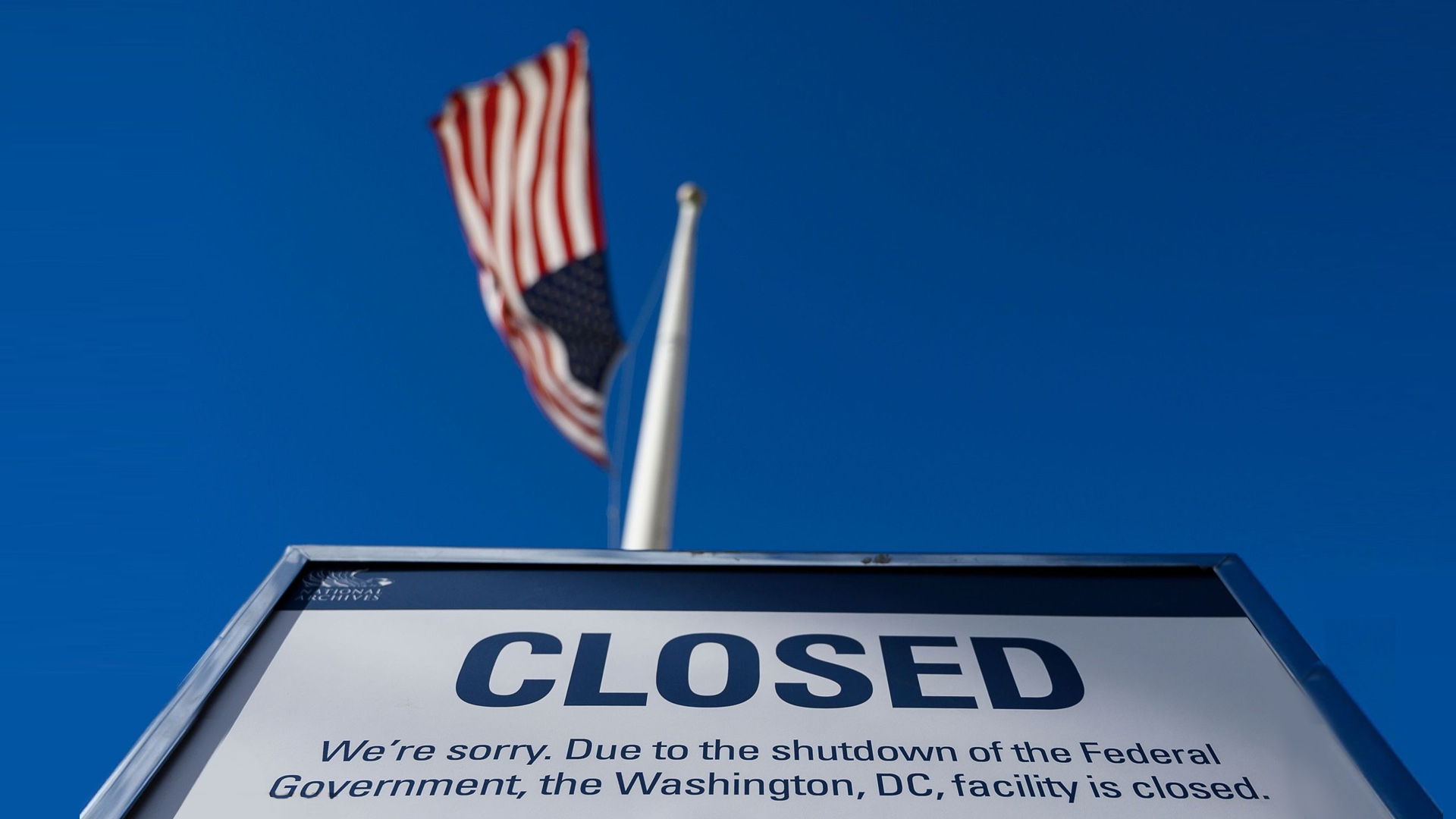Editor's note: Dr. Yuan Sha is an assistant research fellow at the Department for American Studies of the China Institute of International Studies. The article reflects the author's opinion, and not necessarily the views of CGTN.
During his first two years in office, the "unpresidented" U.S. President Donald Trump has broken a number of records, in terms of cabinet turnover, number of false, misleading statements, and now the length of the government shutdown.
The current U.S. government shutdown has entered its 22nd day on Saturday, breaking the 21-day record previously held by the Clinton administration in 1995-96. Without a deal in sight, it remains unknown how far is the end.
'Build the wall'
The U.S. government partially shut down on December 22, 2018, due to an impasse between Trump and Congressional Democrats over funding a border wall at the U.S.-Mexico border.
Trump, the self-proclaimed negotiator-in-chief, is playing a number of games to push for a 5.7-billion-U.S.-dollar deal.
First of all, he is playing a framing game. Sitting on his bully pulpit, Trump was able to speak directly to the U.S. public.
In his first Oval Office address, he tried to frame immigration as a security issue and conflated border security with securing U.S. jobs, countering terrorism, fighting drug-trafficking and safeguarding national security.
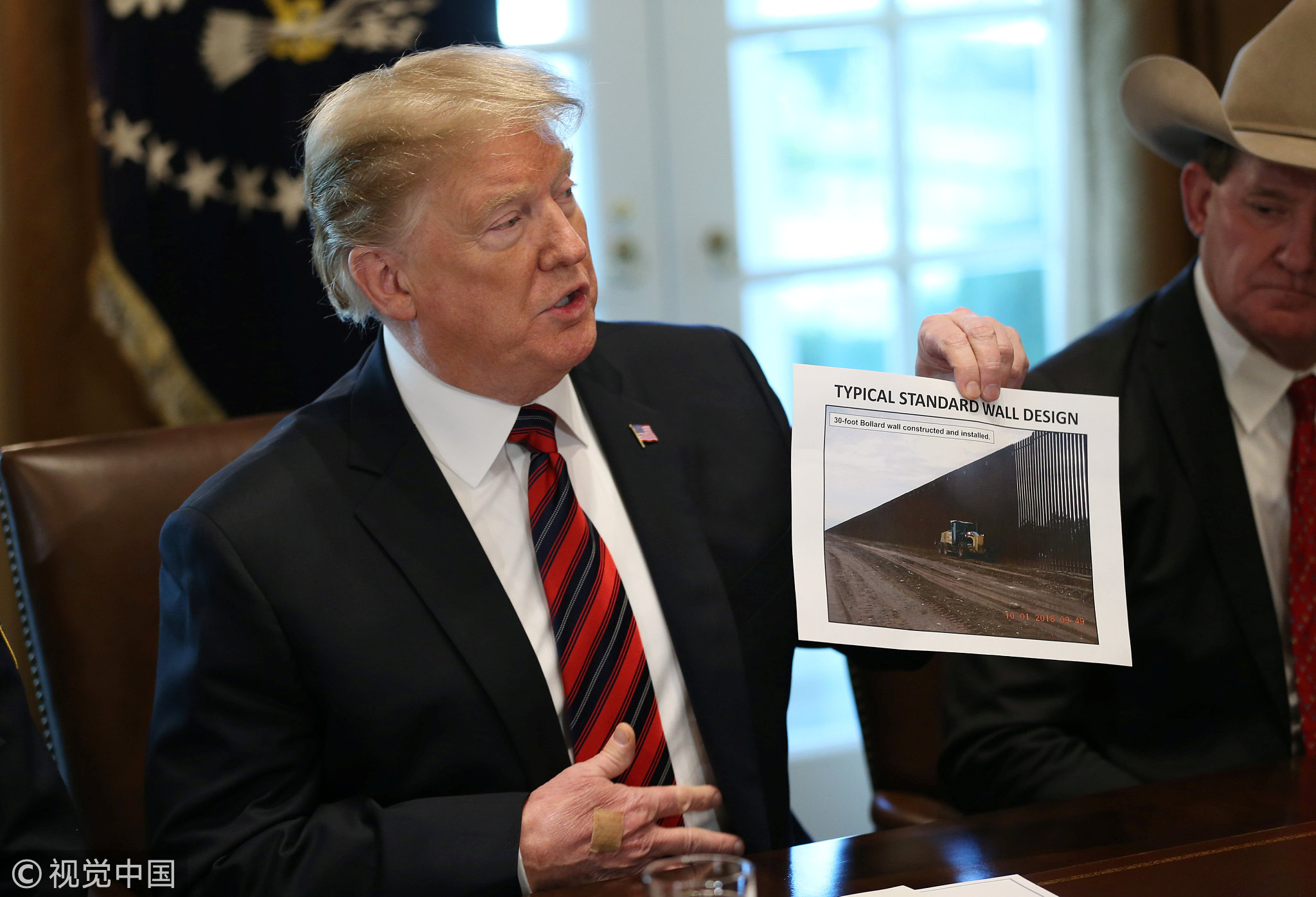
U.S. President Donald Trump holds up a photo of a "Typical Standard Wall Design" as he hosts a "roundtable discussion on border security and safe communities" in Washington, January 11, 2019. / VCG Photo
U.S. President Donald Trump holds up a photo of a "Typical Standard Wall Design" as he hosts a "roundtable discussion on border security and safe communities" in Washington, January 11, 2019. / VCG Photo
He then sounded an alarm over a humanitarian and security crisis and even warned of invasion at the U.S.-Mexican border, justifying his claim to "build the wall."
Second, he is playing a blame game. The shutdown is about the border wall, but goes way beyond it, and has become increasingly politicized.
Eyeing on the 2020 presidential election, attaining the signature campaign promise has become a litmus test for the Trump presidency. By calling it a Democrat's shutdown, Trump is hijacking the shutdown to his own political gain.
Last but not least, he is playing a game of chicken. Trump has taken a series of steps to escalate the shutdown crisis in the hope of scaring Democrats into concession. He said he would be proud to shut down the government for border security.
After the actual shutdown, he threatened it could last months or even years. During negotiations with Democratic leaders, he practiced a classic negotiation strategy, which he touted in his "Art of the Deal," as he staged a walkout from the negotiation table.
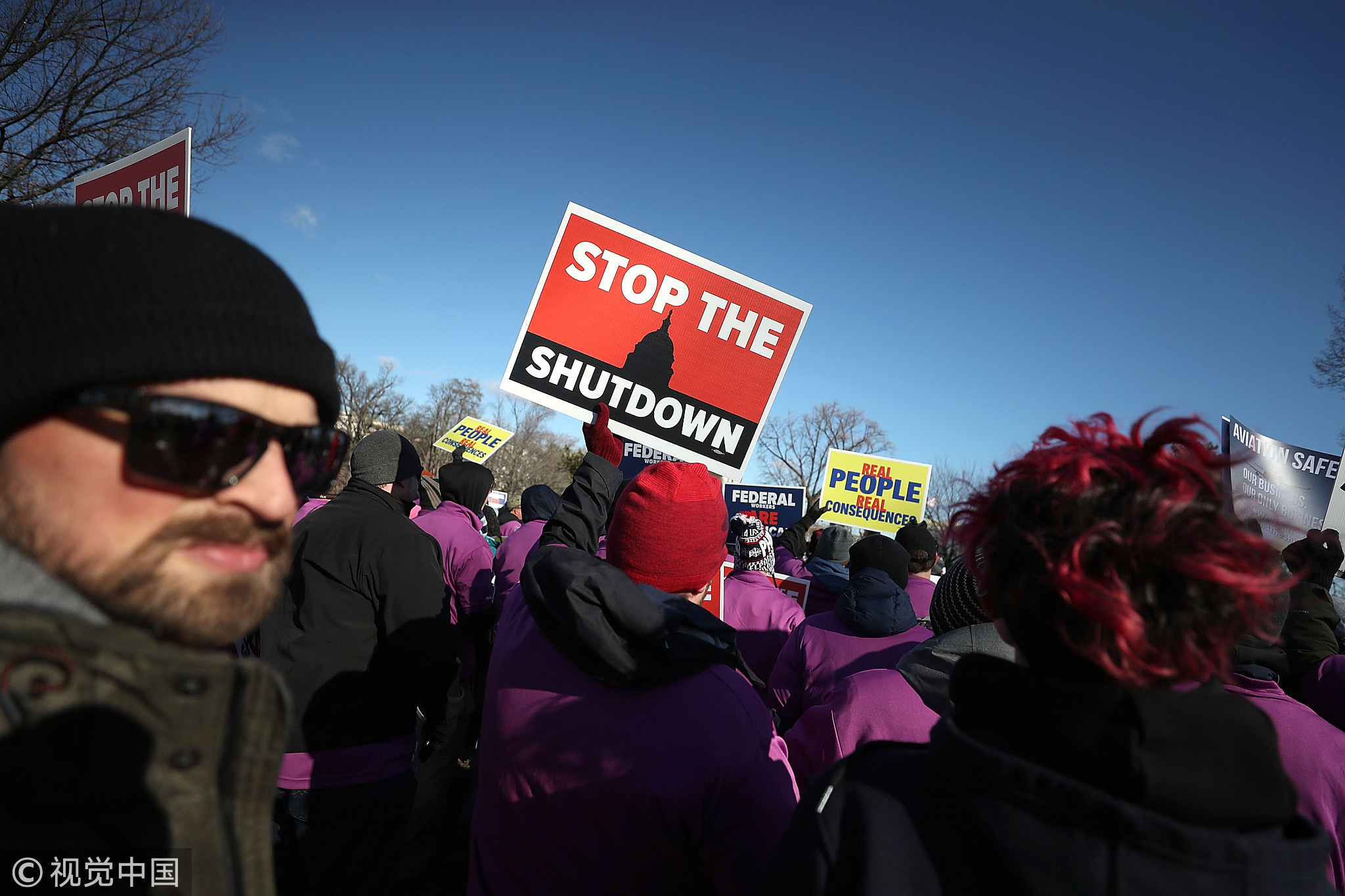
Demonstrators rally against the partial federal government shutdown outside the U.S. Capitol in Washington, January 10, 2019. /VCG Photo
Demonstrators rally against the partial federal government shutdown outside the U.S. Capitol in Washington, January 10, 2019. /VCG Photo
Then he went to the southern border and threatened to declare a national emergency. By taking advantage of his "madman" image, he is trying to exert maximum pressure on Democrats.
Cornered into a wall
However, in this tug of war, Trump has more to lose than Congressional Democrats, and he has increasingly cornered himself into a wall.
First, border wall funding is unpopular among the U.S. public and unlikely to generate much public support. Immigration is a very divisive issue in U.S. politics, and the border wall is even more controversial.
It is dubious for a wall to keep illegal immigration out, and far-fetched to see it as an effective way for counter-terrorism. With a Democratic-controlled House adamant in refusing to cede ground to the president, a 5.7-billion-U.S.-dollar border wall funding is unlikely to materialize.
Second, Trump's leadership is at stake. The shutdown has real consequences beyond a war of words, with closed public facilities, paralyzed government agencies, and furloughed government employees as collateral damage.
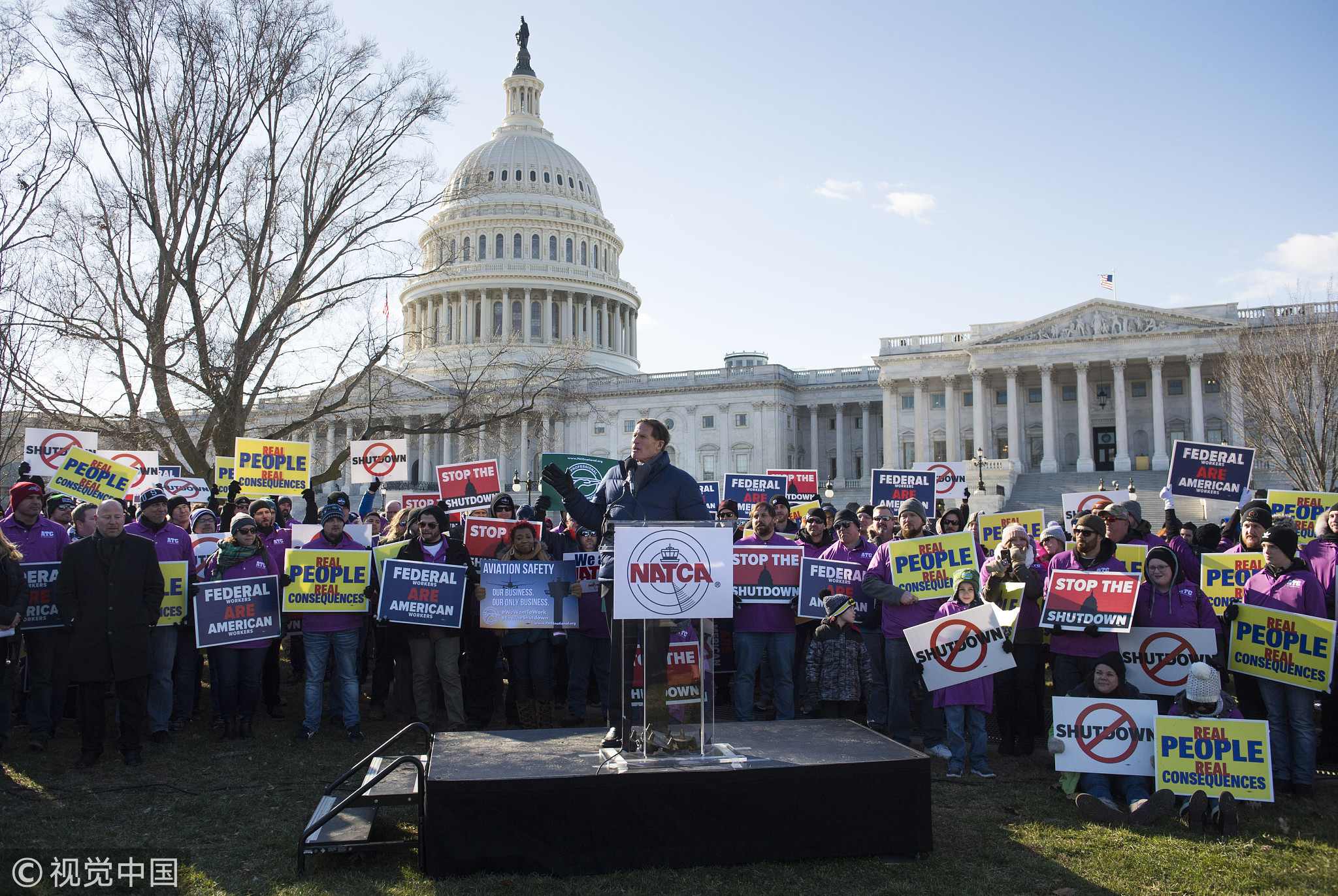
Senator Richard Blumenthal speaks at a rally with members and supporters of the National Air Controllers Association and other aviation industry associations protesting the partial federal government shutdown at the U.S. Capitol in Washington, January 10, 2019. /VCG Photo
Senator Richard Blumenthal speaks at a rally with members and supporters of the National Air Controllers Association and other aviation industry associations protesting the partial federal government shutdown at the U.S. Capitol in Washington, January 10, 2019. /VCG Photo
The economic loss is reaching up to a billion U.S. dollars a week. House Speaker Nancy Pelosi and Senate Minority Leader Chuck Schumer also spared no effort to cast the president as the villain.
They attacked his "temper-tantrum," calling him "holding the American people hostage," and warned him to "stop manufacturing a crisis." The shutdown crisis just magnifies Trump's chaotic presidency and casts his leadership into doubt.
Third, there are inherent risks and dangers in his game of chicken strategy. By raising stakes, he is narrowing the room of maneuver and increasing risks of the crisis getting out of control. Hyping the immigration threat makes his campaign promise even more untenable, risking alienating his conservative base.
The facade of unity among Republicans is already cracking, with the number of Republican Congressmen breaking with the president is rising. The failure to "repeal and replace Obamacare" illustrated how a divided Republican party would defeat the president's cause.
No end in sight
The government shutdown is still dragging on with no end in sight. Trump still keeps the option of declaring a national emergency on the table, which would allow him to bypass the Congress and use the money allocated to the military to build a wall along the southern border.
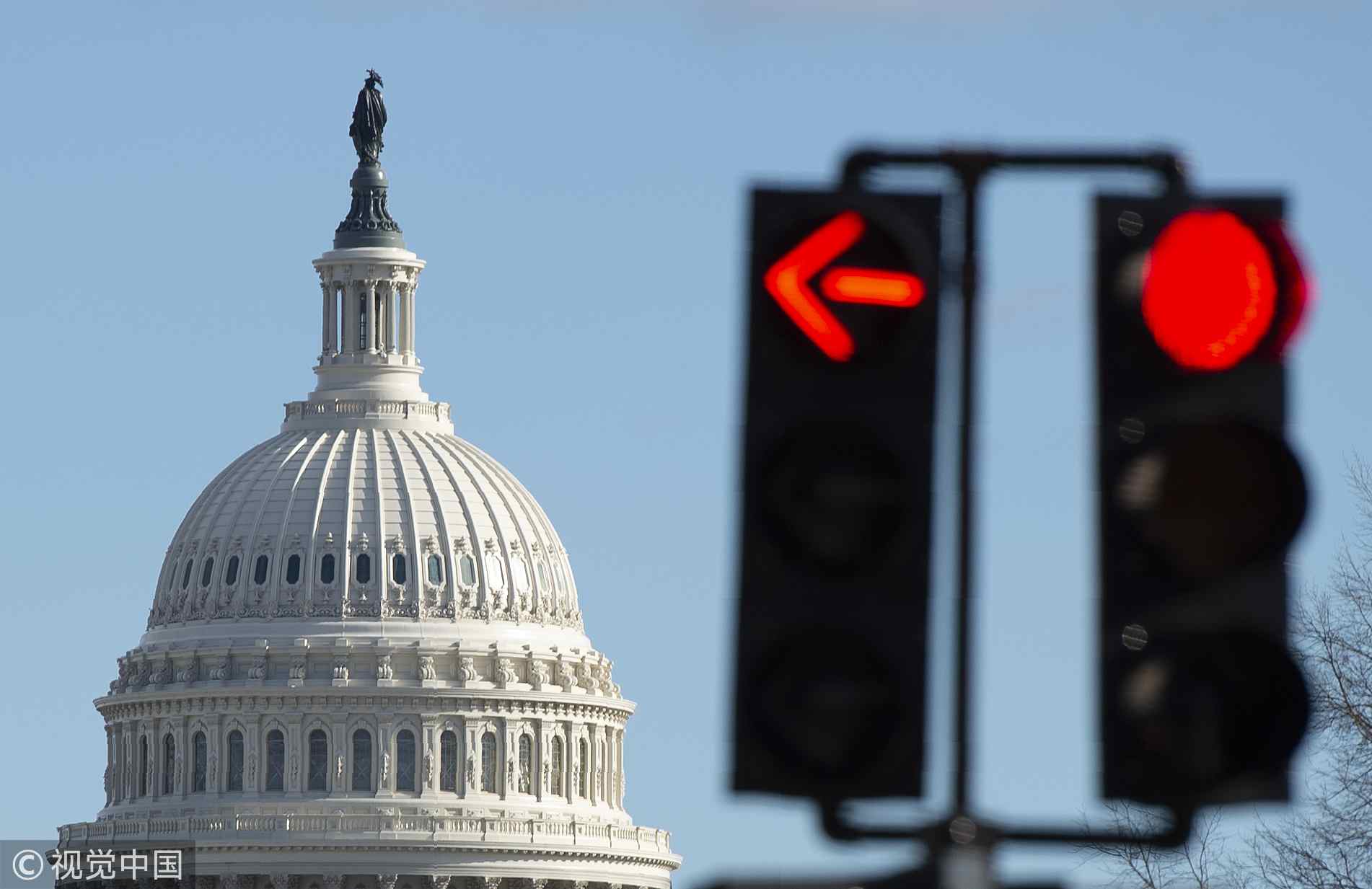
The U.S. Capitol is seen in Washington as the government continues in a partial shutdown, December 22, 2018. /VCG Photo
The U.S. Capitol is seen in Washington as the government continues in a partial shutdown, December 22, 2018. /VCG Photo
But these moves just show how desperate Trump is. With each passing day, he is feeling mounting pressure to reopen the government and is likely to accept some kind of wall funding to have a graceful exit.
In fact, he is already making concessions as he pushes for a steel barrier instead of a concrete wall. And Democrats also made commitments to strengthen border security.
Since both sides have an incentive to reach a compromise, they might arrive at some kind of a deal in the end and declare their own victories.
What is worth mentioning is that in this shutdown, a border wall appears to overshadow the real crux, that is the unsustainable U.S. government debt.
U.S. national debt surged after the tax cut by the Trump administration and is expected to double by 2028. Together with rising political polarization, there seems to be no way to prevent future shutdowns from happening again.
(If you want to contribute and have specific expertise, please contact us opinions@cgtn.com.)

